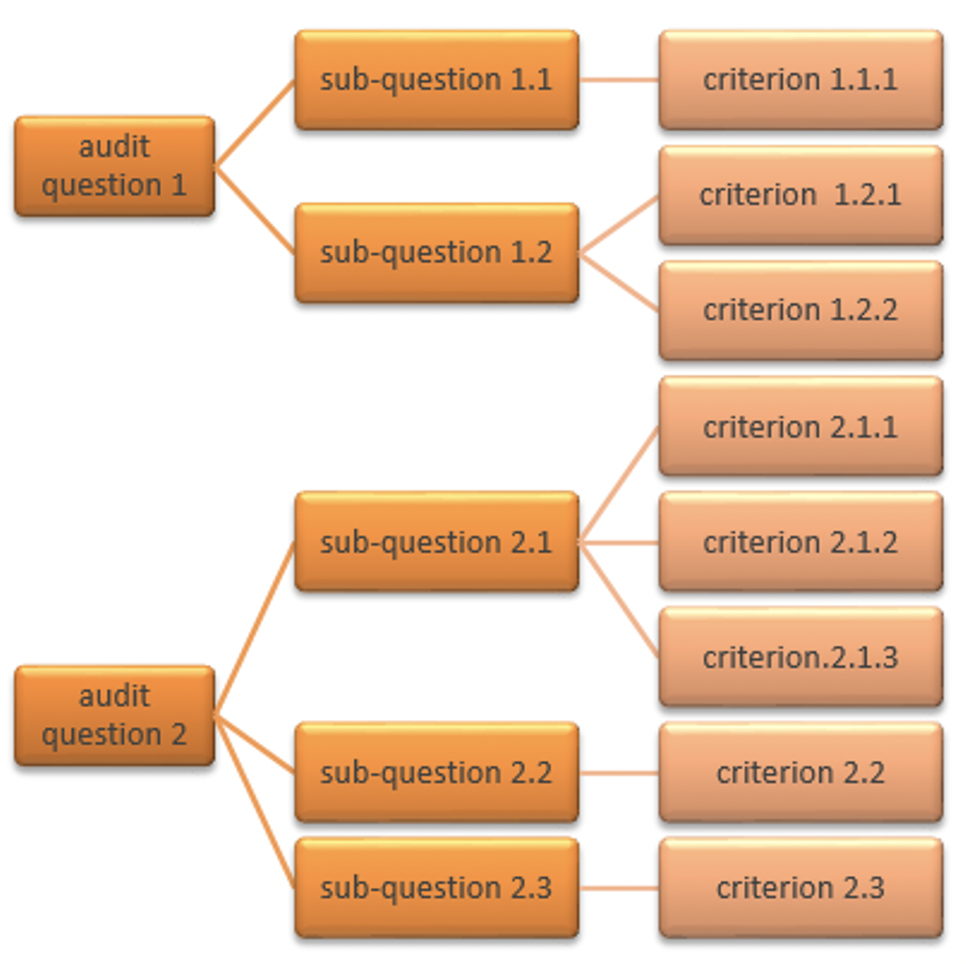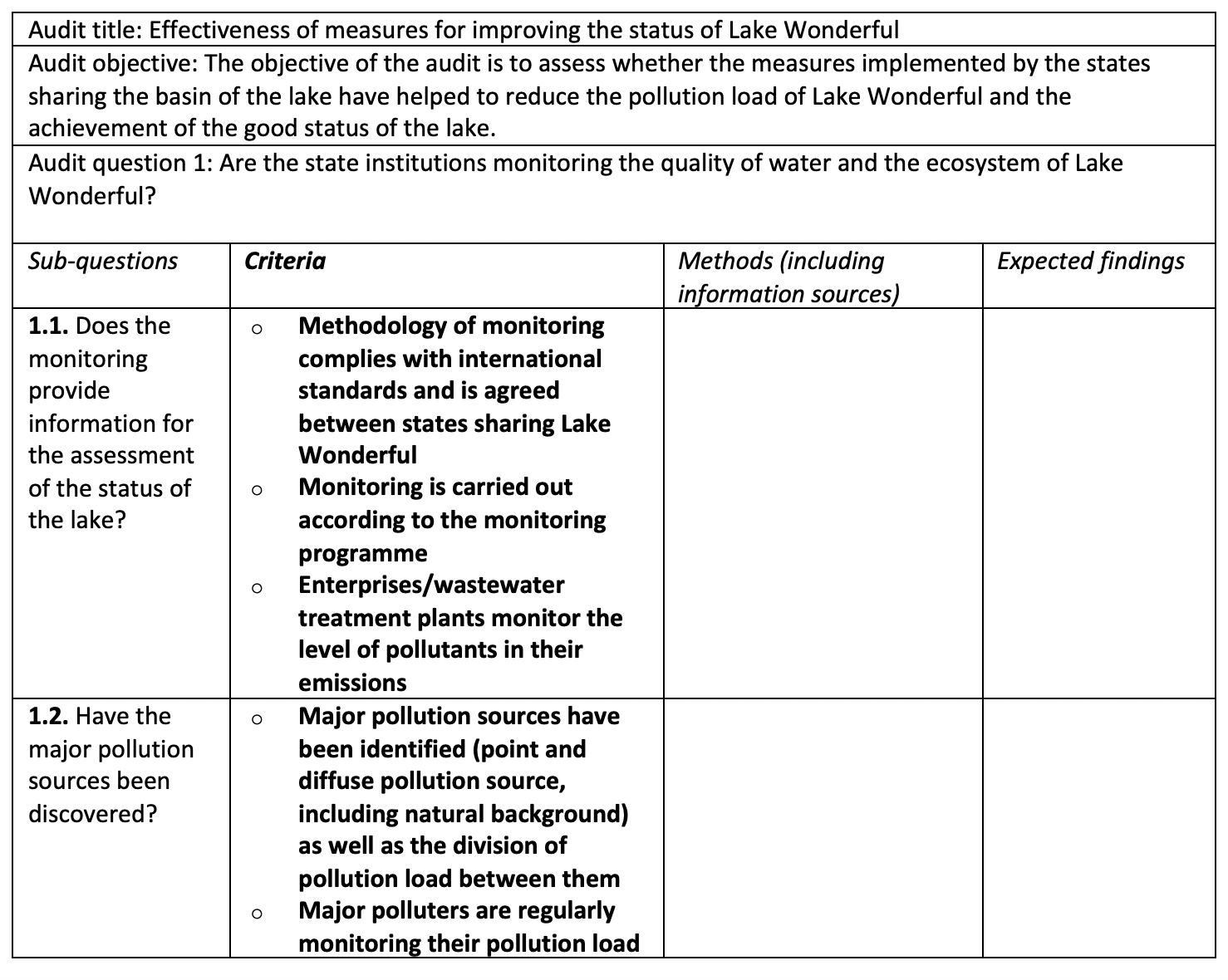MOOC: Introduction to environmental auditing in the public sector
3.4. Criteria
An audit criterion describes the desirable situation used to weigh up the actual situation. There are several criteria in one audit. The criteria need to follow the logic of the audit questions and correspond to the audit objective. The criteria also need to be measurable, as they form the basis of evaluation.
Sources of audit criteria can include:
- international conventions and agreements (look at Module 1)
- national policies, strategies, action plans, legislation etc. and any documents related to the evaluation of their progress
- any documentation on the programmes/projects/operations involved
- auditees’ organisational rules – defining the tasks and obligations of relevant departments or units of an auditee
- the auditees’ internal regulations
- documentation related to public procurement and accounting
 |
Reading suggestion!On finding audit criteria, see ISSAI 3000: Performance Audit Standard (pp. 14-15) or INTOSAI GUID 3910: Central Concepts for Performance Auditing (audit objectives, pp. 25-27) |
In a performance audit, it is often difficult to find straightforward criteria from policy documents. In this case, auditors can formulate so-called common-sense criteria or discuss the desirable level of achievement with the audited institution. It is important that the auditee understands the criteria that will serve as the basis for the evaluation.
 |
Tip for an auditorIt is necessary to have clear criteria which are understandable to the auditee. |
Examples of common-sense criteria:
- All inhabitants should have access to safe drinking water.
- The government has appointed responsible institutions for waste management.
- The food products should not contain harmful substances.
- The governmental subsidies should not contradict each other and they should not undermine the achievement of the environmental/climate objectives.
Audit questions, sub-questions and criteria are all linked. The relationship between the three is presented below.

Relationship between audit questions, sub-questions and criteria
ADM example of audit criteria

 |
Thinking exercise – ADM (3/5)You have chosen the problematic environmental/sustainability issue to audit in your country and given a title to your imaginary audit (thinking exercise in sub-chapter 2.3), you have also set the objective (sub-chapter 3.2) and formulated the main audit question and/or sub-questions (sub-chapter 3.3). Please write down for yourself the possible criteria based on which you could get answers to your audit questions. |

